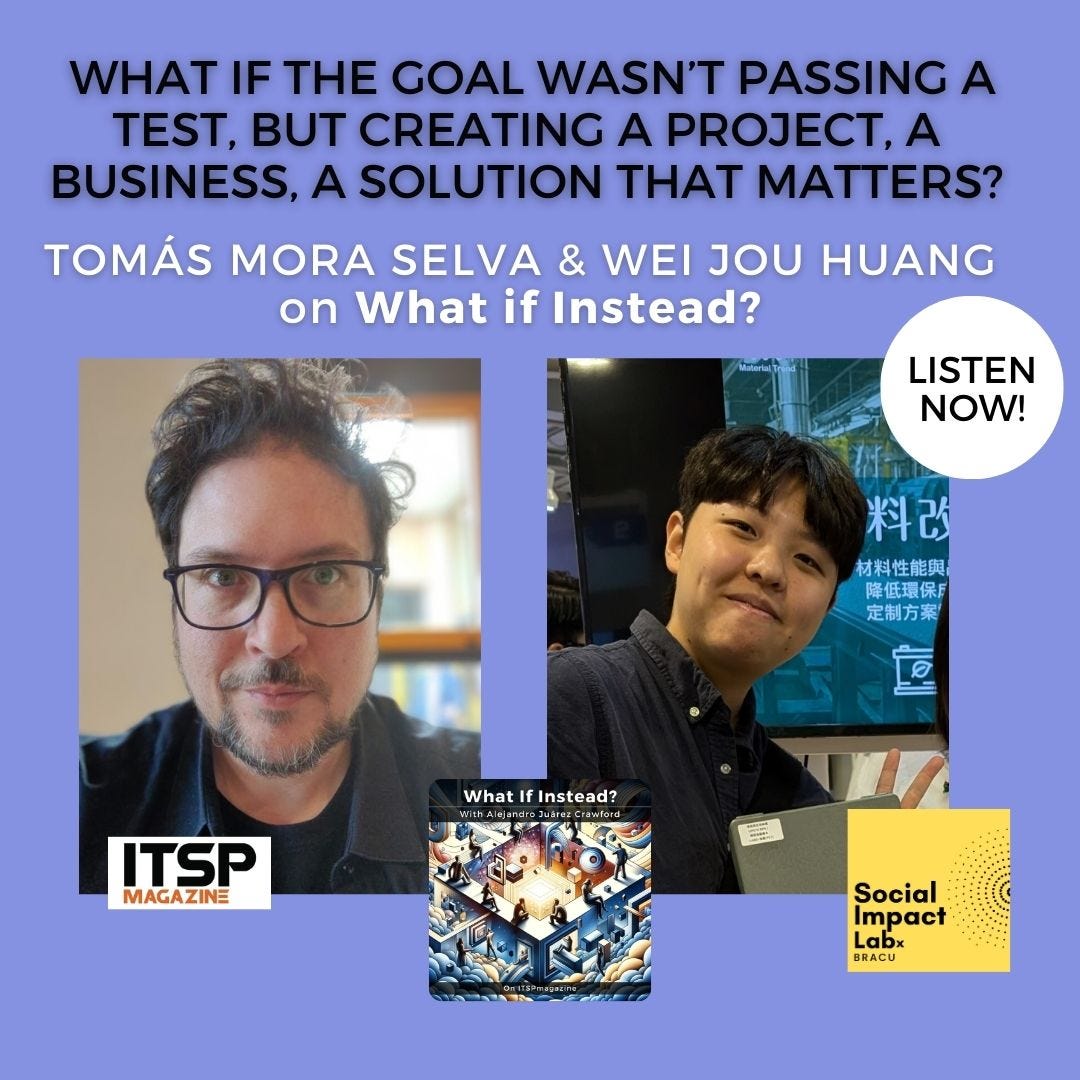What if the goal wasn’t passing a test, but creating a project, a business, a solution that matters?
"Most students don't feel like they can build the future. But what if they could?" – Tomás Mora Selva
What if Instead … Learning Was About Doing?
Education is supposed to prepare students for the future—but too often, it does the opposite. It traps them in rigid structures, teaching them to memorize, follow instructions, and stay within the lines. But what if learning wasn’t about absorbing failed models for meeting our needs?
In this episode of What if Instead?, hosts Mim Plavin-Masterman and Alejandro Juárez Crawford sit down with Tomás Mora Selva and Wei-Jou Huang. Mora, as co-creator of the Democratizing Innovation Institute, RebelBase, and Youth BCN, develops experiential learning methodologies and enables people from around the world to bring them to new populations. Huang works with Mora to expand the impact of the institute, while studying at the Institute of Oceanography, National Taiwan University. Together, they explore a radical shift—learning through building, step by step, until something real exists.
The Problem: Education Trains Students to Follow, Not Build
Traditional education rewards memorization and formulaic problem-solving, but it rarely teaches students how to create solutions from scratch.
Learning is framed as something students receive rather than something they do.
As a result, most students don’t feel like they’re in a position to build their future.
The Shift: A Method That Makes Building Normal
Tomás has spent years designing a structured, yet flexible, method for learning by doing. His approach isn’t about feeding students information—it’s about guiding them through a system that turns ideas into real-world solutions.
Through his work at Youth BCN and RebelBase, he’s proving that education doesn’t have to be passive. Instead, students can:
Take small, manageable steps toward creating something new.
Learn by testing, refining, and iterating in real-world scenarios.
Develop skills that lead to real innovation and impact.
This isn’t just an idea—it’s a process. And it’s one anyone can learn. As Wei Jou recounts: "He makes it very normal to say, ‘Okay, you can go first step, second step, third step … and in the end, you can build it. It’s far beyond the courses … a thing is possible to be built and to be solved, to be developed.’"
Education Beyond the Classroom
Wei Jou highlights how this approach reshapes what it means to learn. Unlike traditional education, where knowledge is often passive, this model ensures that students leave with something real—projects, skills, and a mindset that lasts a lifetime.
Wei Jou stresses the power of this even in the most difficult circumstances. She describes a teammate from Afghanistan, where girls are prohibited from pursuing their education: "She became very, very hopeless, but at the same time, she was trying to find another way to learn and grow .… I can see her growth after this entire project. It will have a real lasting effect throughout our life."
So, What if Instead?
What if education wasn’t just about grades and exams, but about building something real? What if we stopped focusing on what students should know and started focusing on what they can create?
Wei Jou puts it best:
"A system where every student can learn and grow by doing, by creating, by actually launching something." – Wei Jou Huang
What if education wasn’t about absorbing knowledge, but about turning knowledge into something real?
What if the goal wasn’t passing a test, but creating a project, a business, or a movement – a solution that matters?


